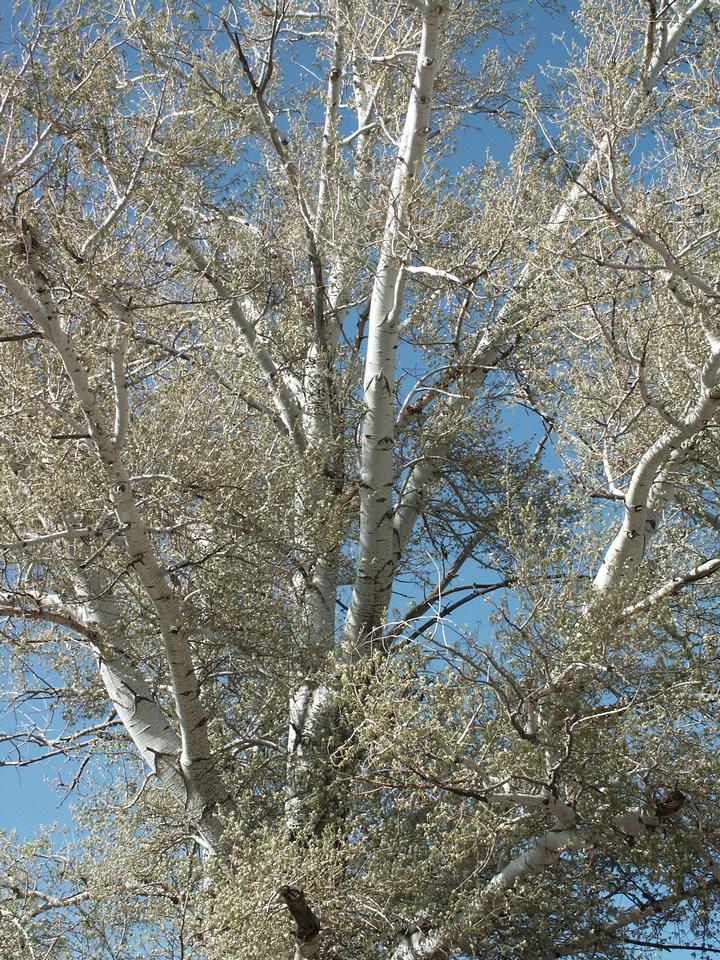Poplar, White
Populus alba
Salicaceae - Willow
Description
Leaves: Alternate; simple; often resembles a maple leaf in shape with very coarse teeth or lobes on margin; base rounded; 1" to 4" long; deciduous; dark green and glabrous above; white and woolly beneath; petioles hairy, 1/2" to 1-1/2" long, not flattened laterally.
Twigs/buds: Twigs slender; green-gray; covered with fine white hairs. Terminal bud more or less woolly.
Flowers/fruit: Dioecious. Fruit an oval capsule, 1/4" long, several together on a slender stalk like a string of beads; seeds tufted, small, light brown.
Bark: Green-white to bright white; with dark cracks and ridges when older; very characteristic.
Wood: Heartwood reddish-yellow; sapwood almost white; soft, light, fairly weak or brittle, and prone to breakage (e.g., during storms); used to make match sticks and for pulpwood.
General: Native to Europe. Often wrongly called silver maple. A large tree, grows rapidly in favorable locations, also thrives under less favorable conditions. Many root suckers (sprouts) occur around the tree. Weak wood and/or branch structure. Sucker (sprout) growth can be a problem. Prefers abundant water.
Landscape Use: Planted in the past around farms and ranches and still sometimes seen in those locations, even if abandoned. Beautiful large tree, but root suckers are aggressive and wood is weak, similar to aspen. Some cultivars are available, but plant only in large, open areas where a troublesome tree will be less trouble. Golden fall color is occasionally nice. Zones 3-9.
Cultivars: 'Globosa', 'Intertexta', 'Nivea', 'Pyramidalis', 'Richardii'.
Characteristics
General
| Family | Salicaceae - Willow |
|---|---|
| Cultivar Availability | Yes |
| Hardiness Zone | 3-9 |
| Type | Broadleaf |
| Utah Native | No |
Growth
| Growth Rate | High |
|---|---|
| Mature Height | High |
| Longevity | High |
| Is Good Under Power Lines | No |
| Crown Shapes | Oval |
Ornamental
| Bark | Yes |
|---|---|
| Fall Color | No |
| Flowers | No |
| Foliage | Yes |
| Fruit | No |
Tolerance
| Shade | Low |
|---|---|
| Salt | High |
| Drought | Medium |
| Poor Drainage | Medium |
| Alkalinity | High |
| Transplanting | High |







